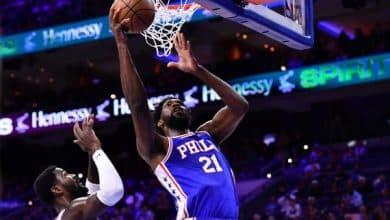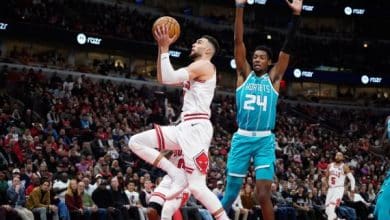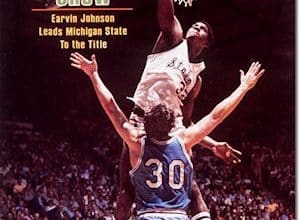
Even though the “Starting 5” series doesn't teach regular NBA fans much, there are still some interesting and amusing sequences. Especially when LeBron James and his wife Savannah talk about the “King’s” naps, an absolutely sacred ritual for the best scorer in NBA history.
“There are some typical cases in the sports world, like LeBron James and Roger Federer, with the latter reporting 11 or 12 hours of sleep per 24-hour cycle during his career. These are typical cases of athletes who have identified sleep as a priority to perform season after season. And they managed to organize themselves to preserve this sleep time” explains the researcher Mathieu Nédélec, “in charge of all research projects on recovery and sleep” at INSEP, and who has just published a book“Sleep better thanks to the secrets of great athletes”.
 Filled with tests, testimonials from athletes (Stéphane Diagana, Marine Johannès, Jean Galfione, Lenaïg Corson, Yann Schrub, etc.) and reports on sleep research, the book intends to “to make as many people as possible benefit from the latest scientific advances on the subject. As a researcher, we are required to write scientific publications, particularly in English, and this was an opportunity to share the latest advances with as many people as possible. And then the high-level athlete has a particularly intense daily life, with a high level of stress, a significant physical and mental load on a daily basis, fatigue linked to travel, sometimes with jet lag, but these are constraints that we find also in society » continues Mathieu Nédélec. “So the main objective was really to share the strategies that athletes have been able to develop to manage all these stress factors that we find in our daily days. »
Filled with tests, testimonials from athletes (Stéphane Diagana, Marine Johannès, Jean Galfione, Lenaïg Corson, Yann Schrub, etc.) and reports on sleep research, the book intends to “to make as many people as possible benefit from the latest scientific advances on the subject. As a researcher, we are required to write scientific publications, particularly in English, and this was an opportunity to share the latest advances with as many people as possible. And then the high-level athlete has a particularly intense daily life, with a high level of stress, a significant physical and mental load on a daily basis, fatigue linked to travel, sometimes with jet lag, but these are constraints that we find also in society » continues Mathieu Nédélec. “So the main objective was really to share the strategies that athletes have been able to develop to manage all these stress factors that we find in our daily days. »
Marine Johannès explains in particular that in the WNBA, she does not hesitate to take melatonin and cherry juice (also rich in melatonin and antioxidants) after matches, to calm down and get to sleep better, despite traveling and jet lag.
Regularity rather than duration
“Melatonin does not induce sleep” explains Mathieu Nédélec. “It is more intended to synchronize the biological clock, and that is why it is rather prescribed in elderly people, who may present phase shifts, or in younger people, who may present shifts of the biological clock. Obviously, it is recommended for people who travel regularly and who experience jet lag. But it can cause drowsiness and as everyone naturally secretes it, the necessary quantity varies greatly from one individual to another and then depending on the chronotype of the individual, taking it at certain inopportune times can further disrupt the biological clock of the individual. 'something else. You must therefore be well supported to take it, and know what you are doing, which is far from being the case for the majority of people who consume it. »
The chronotype (dolphin, bear, lion or wolf) defines a person's preference for morning or evening activities, including bedtime and wakeup time. According to studies, it also plays a role on the type of sport practiced, with “evening” athletes being more efficient in team sports practiced in the evening.
Beyond quantity, there is quality of sleep
These “evening” athletes will thus be less disturbed in their sleep by evening matches and training, even if all athletes must adapt to the delays generated.
“This is the constraint of evening matches, typically around 9 p.m., because it will generate a particularly significant level of alertness and excitement at a time when it is advisable to calm down and relax to find peaceful sleep. Following this match, athletes will go to bed much later, taking time to come down, causing a shift in the biological clock, with a tendency to prolong their night's sleep the next day, and there is therefore a logic of shift in phase. »
And we don’t make up for the beneficial effects of starting to sleep at the end of the night…
“A lot of people focus on the quantity of sleep, how many hours they slept last night, but that's just one dimension of sleep and you also have to consider the quality of sleep because it can be more or less continuous , sometimes interrupted by micro-awakenings, which fragment it and make it lighter” explains Mathieu Nédélec, who emphasizes regularity rather than duration. “But particularly depending on the chronotype, if you are more of a morning person or an evening person, not all hours of sleep are equal. The first three or four hours of the night are particularly rich in long and deep sleep, which is very restorative, and will be decisive for the quality of that night. »
“Shifting your bedtime by one or two hours from what suits us best will cut into the start of the night, which is rich in deep slow-wave sleep. And no matter how much we postpone our awakening by one or two hours, this deep slow sleep, we will lose it at the beginning of the night without finding it again at the end of the night. At the end of the night, we are more in paradoxical sleep, in light slow-wave sleep, which is another type of sleep stage. »
Napping to recover from deep slow-wave sleep
In the event of a shift in bedtime, following training or a match, rather than extending the night, it is therefore preferable to take a nap, ideally between 1 p.m. and 4 p.m., over a 1.5 hour cycle.
“After the match in the evening, and even if you go to bed late, it is rather recommended to set an alarm, to shift one or maximum two hours from the usual times, to have a minimum of activity in morning » thus deciphers Mathieu Nédélec. “This is why players can be called to the training center for recovery because it allows them to have an activity in the morning, to generate a little sleep pressure and then to compensate with a nap early in the afternoon. noon. The ideal time is between 1 p.m. and 4 p.m. And there, by initiating a nap, you initiate a new sleep cycle with deep slow-wave sleep. »
For high-level athletes, sleep is in any case a major issue, as LeBron James' naps clearly illustrate, especially since screens help to disrupt it.
“At the time of the Olympic Games, I participated with the Organizing Committee in a booklet, which was given to each athlete present in the Olympic village on the proper use of screens. Today, there is a whole range of disorders and pathologies recognized in relation to screens, notably addiction. This is a major issue for performance, particularly when used in the evening, because it can disrupt performance the next day. There are two major disadvantages linked to screens: exposure to blue light until late in the evening, which will delay the biological clock, and then particularly arousing content. When you tweet, when you write comments, when you react to different things, your brain is very active, and this is incompatible with deep, quality sleep. This will keep the brain in a state of wakefulness and vigilance which will continue for a good part of the night, even once you have fallen asleep. concludes the sleep specialist at INSEP.













